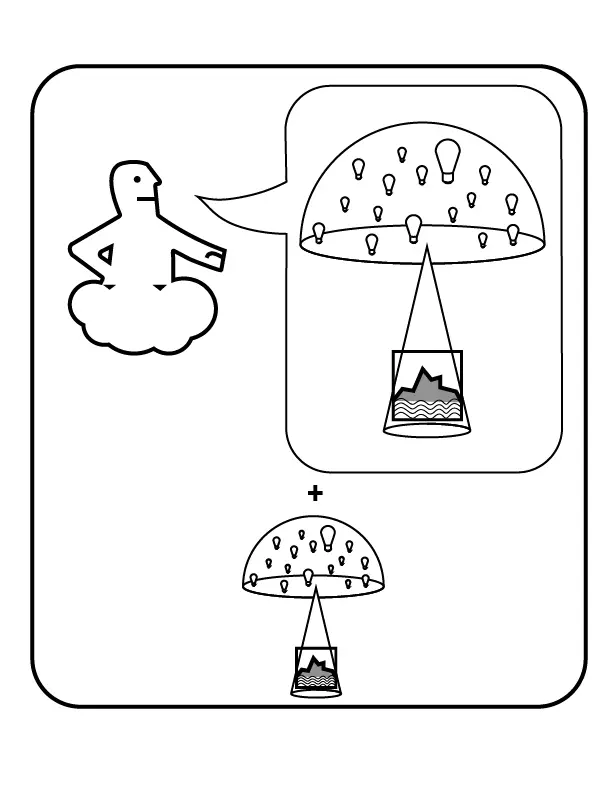Here in Genesis 1:15, we see God give light on the earth. Now we’re at roughly the midpoint of the first chapter. Let’s get down to the verse that is the subject for our post!

We start at the top left of this verse with our favorite pictogram, God. He speaks of the lights he proposed in 1:14. In the last verse, we learned that these lights were intended to help people keep track of the passage of time. Here we see the lights serving a more straight-forward purpose.
We see God speaking of his creation. Accordingly, in the speech bubble, we see the pictogram for the vault of heaven (firmament!). The lights are hung up in the vault. A cone stretches down from the lights in the vault. It represents the light shining down from the vault of heaven. The pictogram for earth sits at its base.
As is typically of these early verses, we see God speak all of this. Furthermore, God’s words connect to a reiteration of the same constellation of pictograms. This shows that what God has spoken becomes the real state of the universe.
God Made the Vault to Give Light on the Earth…
And we keep at this project to cast a different light on the bible. We hope you find our work useful. Next verse we put us firmly past the first half of the first chapter of the Bible. We’re really excited to see what’s next, and we hope you are too!
In the meantime, you could take a look at the whole IKEABIBLE, or check out some of our other blog articles. Or maybe check us out on Pinterest.









